In this content you’ll learn:
Key Takeaways
- The top ten reasons your lawn mower could be running slow are:
- A broken or down-shifted throttle
- Neglecting regular maintenance
- Blocked air filter
- Clogged fuel system
- Dirty or damaged spark plug
- Dull lawn mower blades
- Poor or contaminated fuel
- Clogged or damaged carburetor
- Weak battery
- Combustion system issues
- Some of these issues are easy to fix at home, while others require the help of a professional.
- Perform regular maintenance on your lawn mower (with the help of a calendar), and you’ll avoid or delay many of the above issues.
Over time, lawn mowers can start to show all kinds of issues, especially with a lack of regular maintenance. One of those issues is your lawn mower running slow. But just what makes your lawn mower run slow?
Top Ten Reasons Your Lawn Mower Is Running Slow (And What To Do For Each)
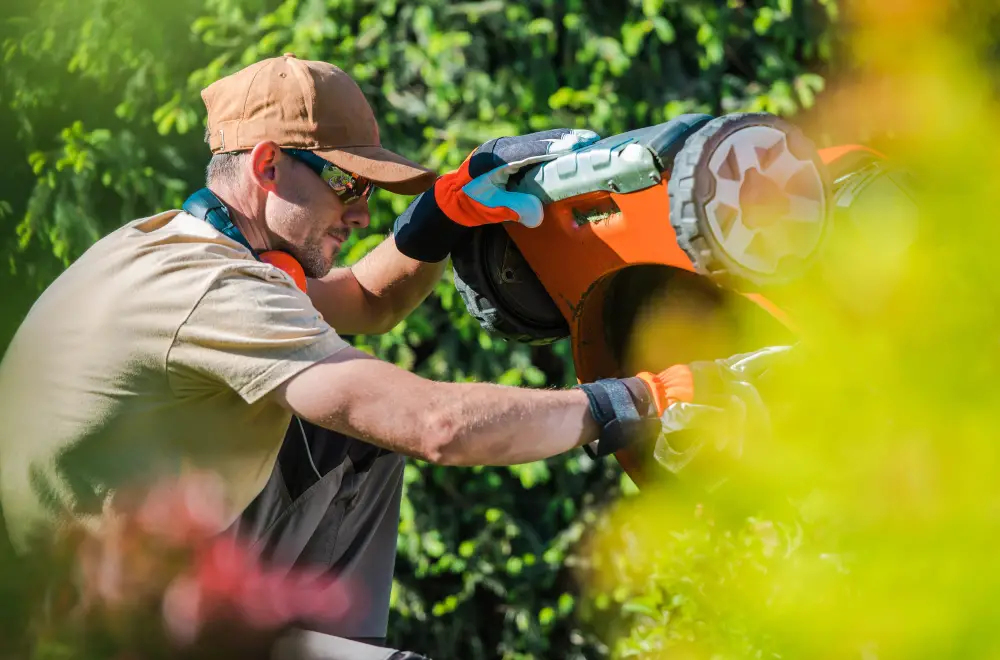
Lawn mowers can and do experience many issues, including running slow. While you should expect minor variations in lawn mower performance, it’s best to always check them out. In addition, it’s best to inspect your lawn mower before and after every use, especially if it’s running slow.
Also, while you can do many of the below fixes yourself, some will require the assistance of professionals. That’s okay, and it’s better to call on them than end up with a lawn mower you can’t use anymore.
With that in mind, let’s discuss safety before getting to the top ten issues that make your lawn mower run slow.
Follow Proper Safety Precautions
Safety always comes first when operating or maintaining your lawn mower.
To protect yourself, get and always wear the following items:
Also, always work on your lawn mower on level ground in a well-ventilated space. Chock the wheels so they won’t roll.
1 – The Throttle
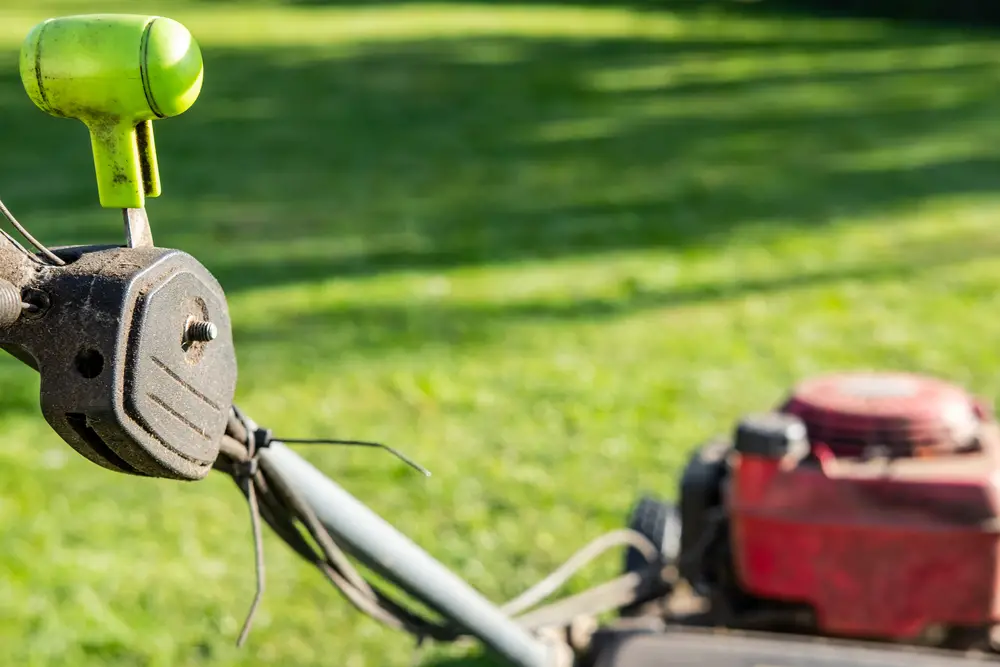
In case you don’t know, your lawn mower throttle determines engine speed. As you nudge the throttle toward the rabbit, the engine speeds up. As you nudge it toward the tortoise, it slows down. This is courtesy of a cable connecting the throttle to the carburetor, which determines fuel flow.
You won’t be able to adjust engine speed if your throttle cable breaks and your lawn mower will run slow if it breaks in the slow position (tortoise).
What To Do
Sometimes, you may have forgotten you left the throttle in a slow position. If so, shift it up and see if that fixes your lawn mower.
If not, or if the wire is broken, follow it to the breaking point and remove it by unhooking it from the throttle bar on the dashboard. To get to the other end, remove the air filter compartment and unhook the cable from the carburetor.
Replace it with the new cable by hooking it back into each end of the connections, one at the carburetor and the other at the throttle bar on the dashboard.
2 – Neglecting Regular Maintenance
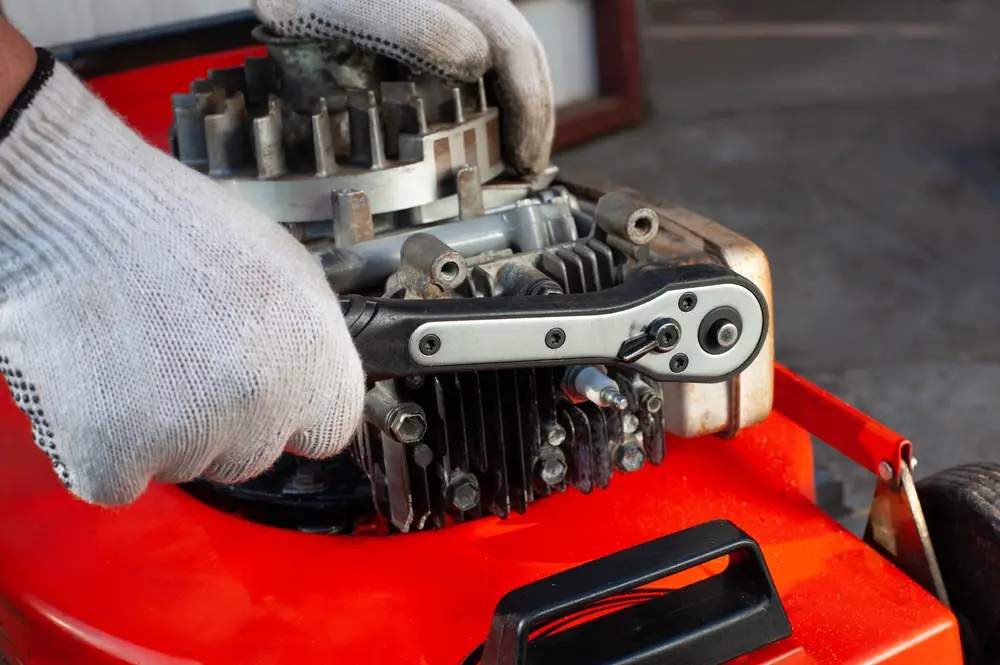
Neglecting maintenance will wear down your lawn mower faster and cause performance issues (such as running slowly) or full-on breakdowns.
What To Do
In short, always perform regular maintenance on your lawn mower. Doing this prevents it from running slowly and keeps it in prime operating condition otherwise. Your owner’s manual will likely have some suggestions, and it should indicate where you can find the parts you need to perform maintenance on.
Examples include the following:
- Changing your lawn mower’s oil and filter (if it has one) every 50 hours of use
- Replacing your lawn mower’s air filter every 75 hours of use
- Sharpening your lawn mower’s blades every 20 to 25 hours of use
- Maintaining tire air pressure
To help, create a regular maintenance schedule for yourself and put those dates on a calendar wherever you store your lawn mower. Also, get in the habit of checking your lawn mower before and after every use.
3 – Air Filter Blockages
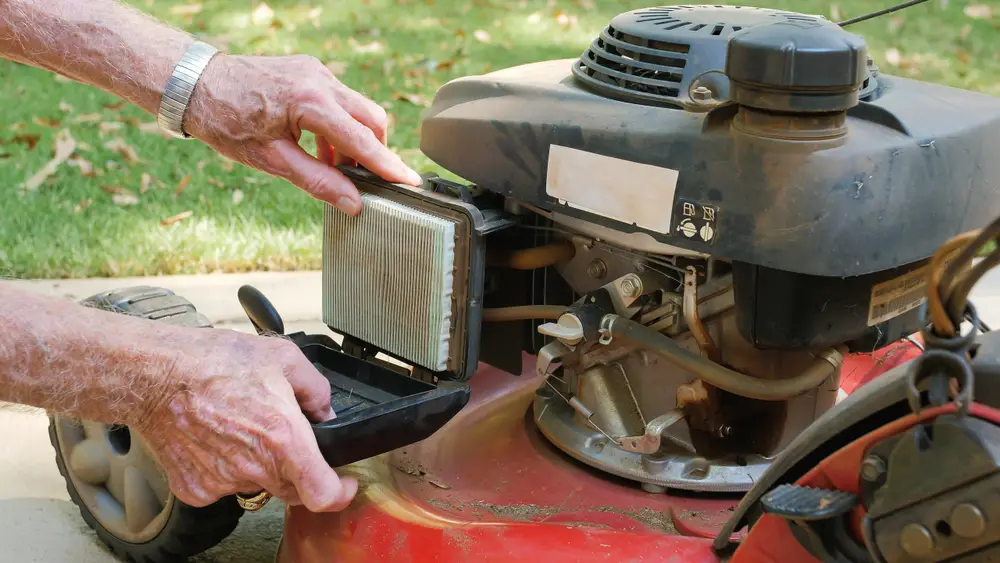
Air filters get dirty or clogged as they prevent dirt and debris from getting to the engine. When they become dirty or clogged, they can choke out the engine due to decreased airflow. This causes your lawn mower to run slowly.
What To Do
Replacing your lawn mower’s air filter every 75 hours of use prevents this issue. However, sometimes you forget or don’t have the time. Still, replacing your air filter should be enough in most cases.
You’ll find your lawn mower’s air filter in a compartment on the side of the engine with a single nut or bolt.
Remove the nut or bolt, cover, and air filter. Replace it with a new one, close the cover, and screw the nut or bolt back onto the compartment.
You can also use an air compressor blower to clean your air filter, but it’s far better to replace it.
4 – Fuel System Obstructions
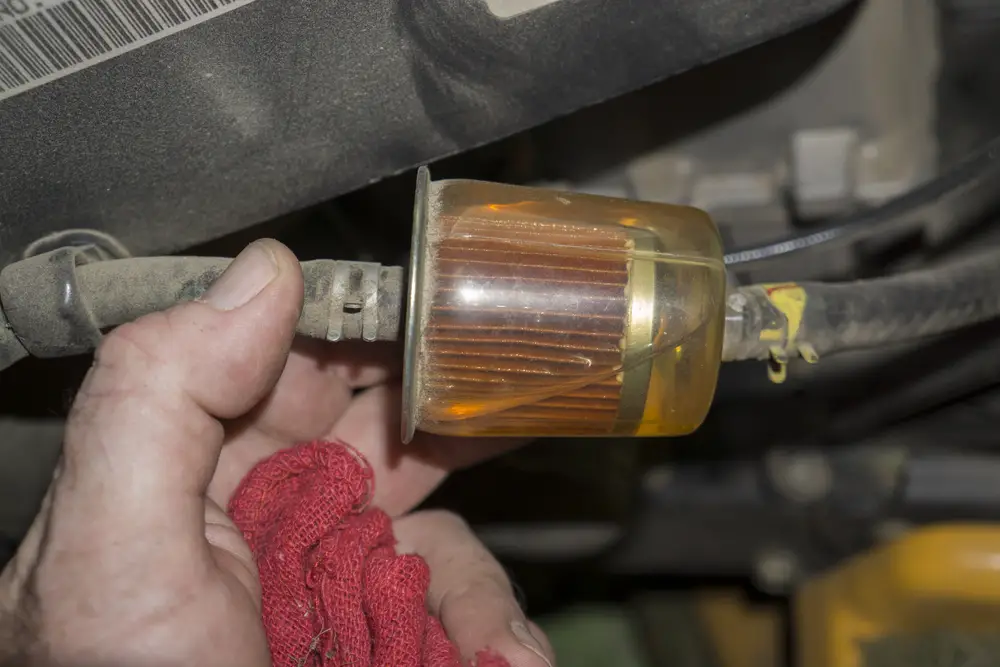
Any blockages in a fuel line or fuel filter slows down and can even kill your lawn mower’s engine. Bad gas or cutting around too much dirt can cause this issue. Check and fix this issue immediately, as failure to do so can damage your lawn mower’s carburetor or engine.
What To Do
Try a fuel treatment first in this case. Sometimes this will be all you need.
However, you may also need to replace your lawn mower’s fuel filter. In this case, follow the fuel hose from the gas tank to the engine. Doing so leads you to a piece in those with clamps.
Use a flathead screwdriver if the clamps if they have screws. Use needlenose pliers if they’re V-clamps to loosen them.
Remove the old filter and replace it. Pull the clamps back to their original positions and tighten them back up. Clean any spilled fuel with a rag.
5 – Spark Plug Problems
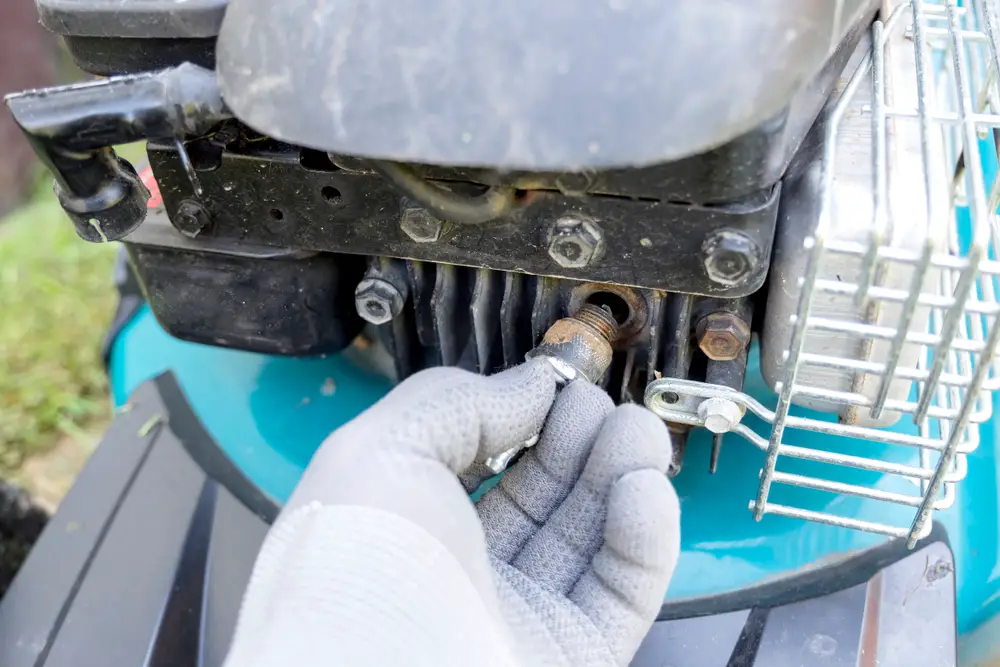
A misfiring spark plug slows your lawn mower down and causes severe vibrations and straining noises. This can happen due to damage or debris build-up.
What To Do
Your lawn mower’s spark plug rests underneath a single wire at the front of the engine. Remove the wire, then use a ratchet with a ⅝” deep socket to unscrew the spark plug.
Check your spark plug for signs of grime build-up and clean it off. Measure the gap between the L-shaped piece and point at the end with a gap tester. Your owner’s manual will tell you if this gap is too wide. Replace the spark plug with a new one if it is, and push the wire back on the spark plug until it clicks.
6 – Dull Blades
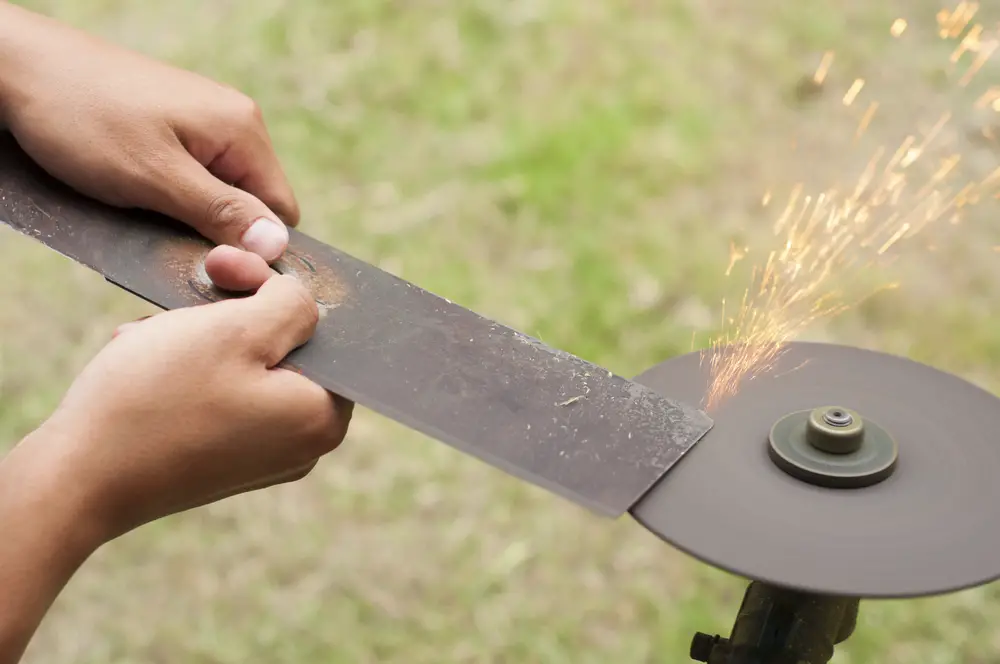
Dull blades make your lawn mower work twice as hard to cut grass. This slows it down and cuts your yard poorly.
What To Do
Keep a spare sharpened set of lawn mower blades. This makes it easy to replace them. Otherwise, you will have to sharpen your dull blades.
To replace lawn mower blades, place a 2×4 partway into the cutting deck to prevent them from turning. Check your owner’s manual for the size of the bolt holding the blade, then remove it with a socket and ratchet set.
Put the new blade on and tighten the bolt.
7 – Poor Fuel Quality and Contamination
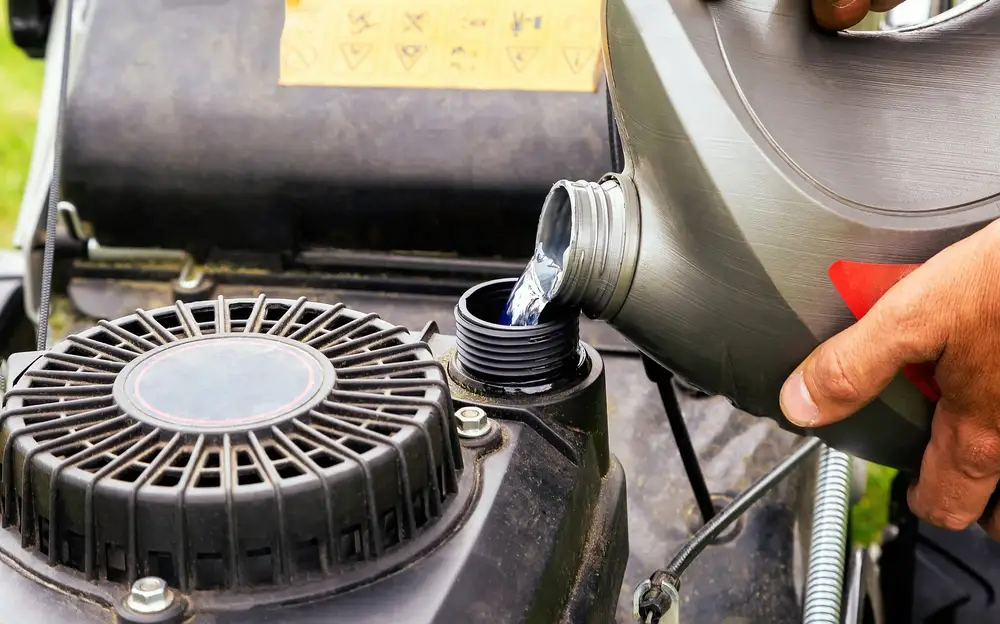
Some gases are better quality than others. In other cases, water or other contaminants can get into the gas. Also, old gas sitting for too long crystallizes.
All of these issues cause your lawn mower to slow down. Worse yet, they can cause significant damage to your lawn mower.
What To Do
Use fuel stabilizers and treatments as preventative measures. You can also use fuel treatment to immediately respond to issues you notice with your lawn mower’s fuel. Doing this lessens the chance of major harm.
You can also drain your lawn mower’s fuel with a siphon and gas can if your fuel has been contaminated for a week or less. Place one end of the siphon into your lawn mower’s gas tank and the other into the gas can, then squeeze the bulb until gas flows into the can.
However, we still recommend sending your lawn mower to a shop so they can professionally clean and care for it.
Also, please note if the contaminated fuel harmed the combustion chambers, the only option is to get a new lawn mower because the cost of repairs will exceed the price of a new lawn mower.
8 – Carburetor Complications
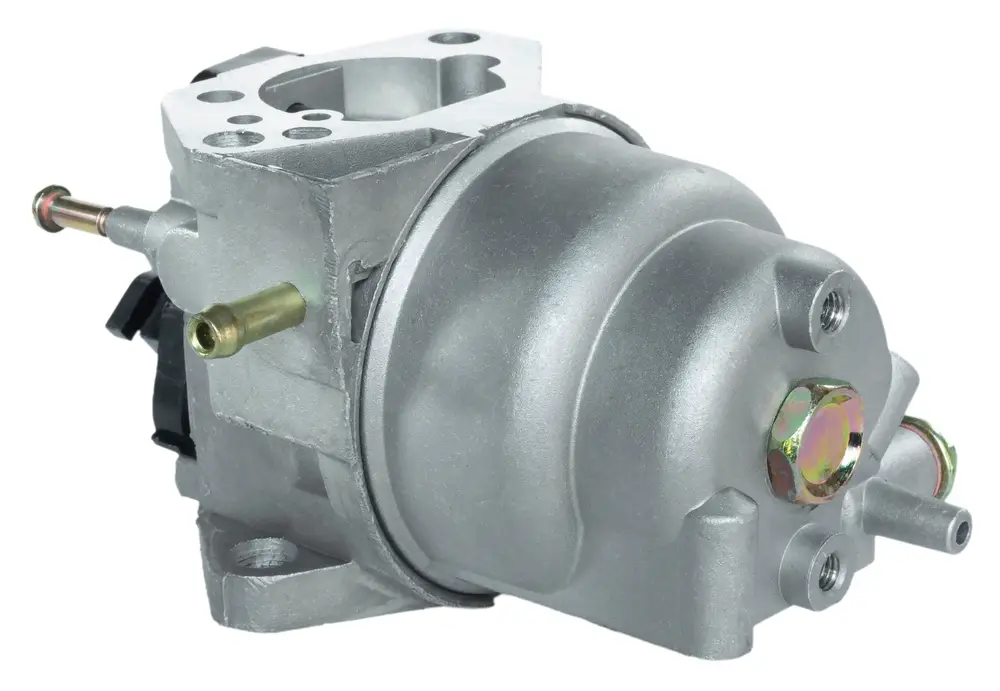
Carburetors can suffer from many problems, including water in the fuel, contaminated fuel, caked-up gunk in the inner parts of the carburetor, and the throttle or choke staying stuck. As mentioned in other sections, caring for those issues before they affect the carburetor is essential.
What To Do
Along with fuel treatment, try carburetor cleaner, thoroughly cleaning the carburetor by spraying it inside and out. The cleaner removes dirt, debris, and excess gunk.
Send your lawn mower to professionals if this doesn’t solve the issue.
9 – Weak Battery
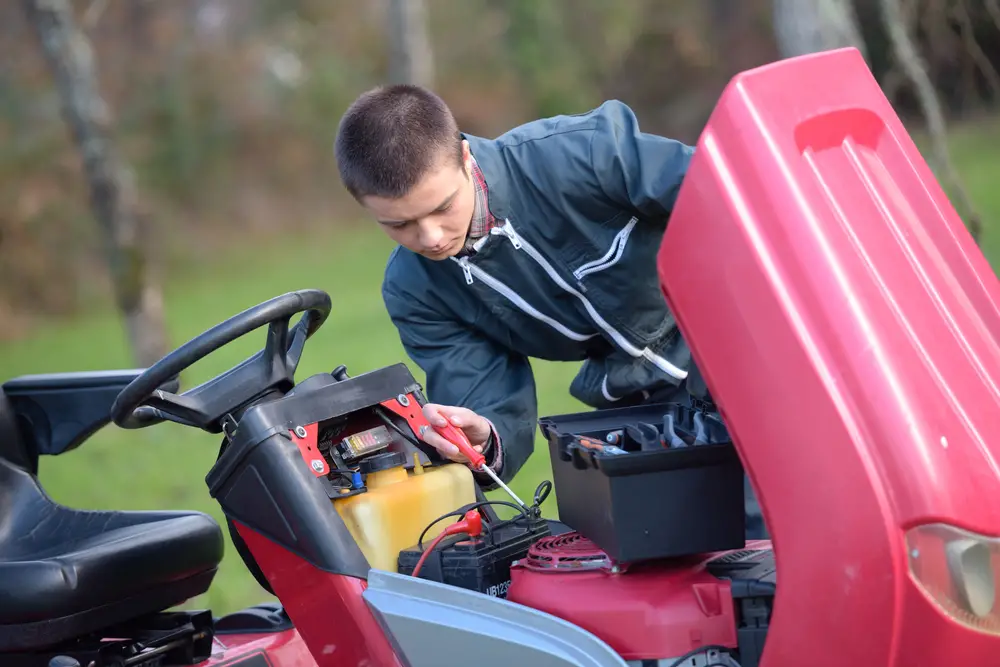
Batteries weaken due to age or use. A weakened battery won’t be able to drive your lawn mower as fast, causing it to slow until it dies.
What To Do
Test your battery with a tester/charger to see if it’s weak. Use the tester and lawn mower manuals to locate and understand all parts.
After you locate your lawn mower battery, connect the black clamp (negative) from the tester to the battery’s negative post and the red clamp (positive) to the positive post. Plug your tester in and turn your lawn mower on, using the tester manual to determine what the reading is indicating.
If your battery is weak, charge it by following the manual’s instructions. When finished with your tester/charger, turn off your lawn mower and it and remove the red clamp first, then the black.
If it’s dead, replace it. Remove first the positive (+) battery wire then the negative (-). Remove the bolt holding the battery in place.
Bolt the new battery in, connect and tighten the negative wire, then do the same for the positive wire.
10 – Combustion Complications
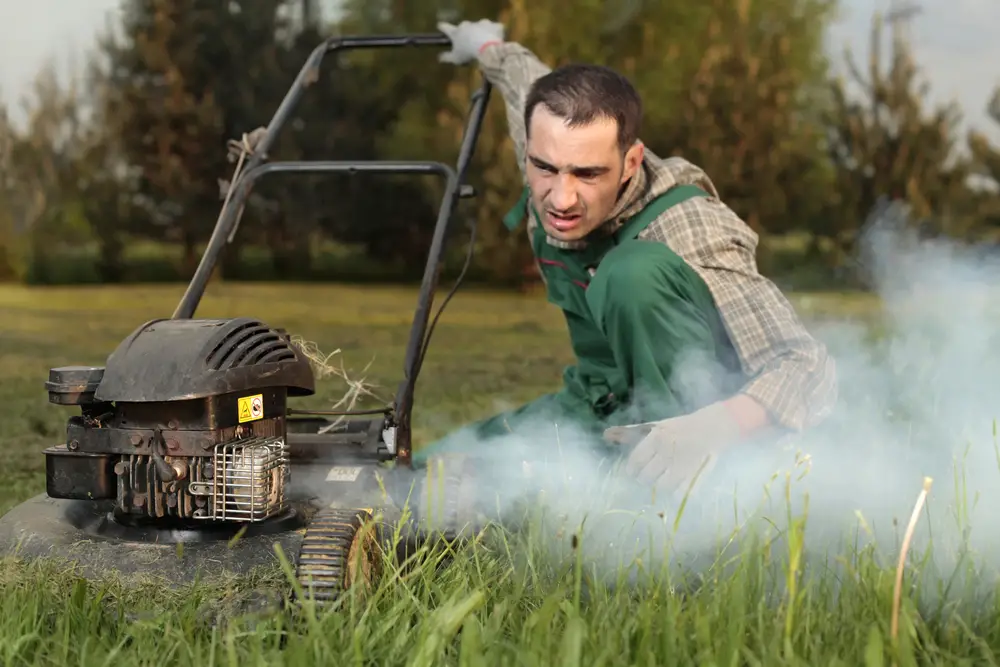
Combustion is the process driving your lawn mower. It allows parts to move and your lawn mower to work.
Many reasons exist that complicate or hinder combustion, leading to your lawn mower running slow or dying.
What To Do
Send your lawn mower to professionals if combustion is the issue. Even then, there is no guarantee they can fix it. In that case, you’ll need a new engine or lawn mower.
A certified mechanic will know which option is best, but there is no way to tell how bad it is until the entire engine is apart and looked into.
Personal Experiences With A Lawn Mower Running Slow
I’m a person who loves to get the job done and enjoy my accomplishments as soon as possible. Cutting grass is no exception. I’ve had my share of lawn mowers slowing me down, but none stopped me like the one catching fire.
It was all due to neglecting regular maintenance and checking the lawn mower thoroughly before starting. This was back when the fuel lines would kink up and rupture. I would have noticed the gas leakage if I checked the fuel lines before I started.
Lessons learned, and now I double-check everything. Since then, I have only experienced customer’s lawn mowers running slow, and it was due to most of the reasons mentioned in this article. I was happy to help get them back up and running.

